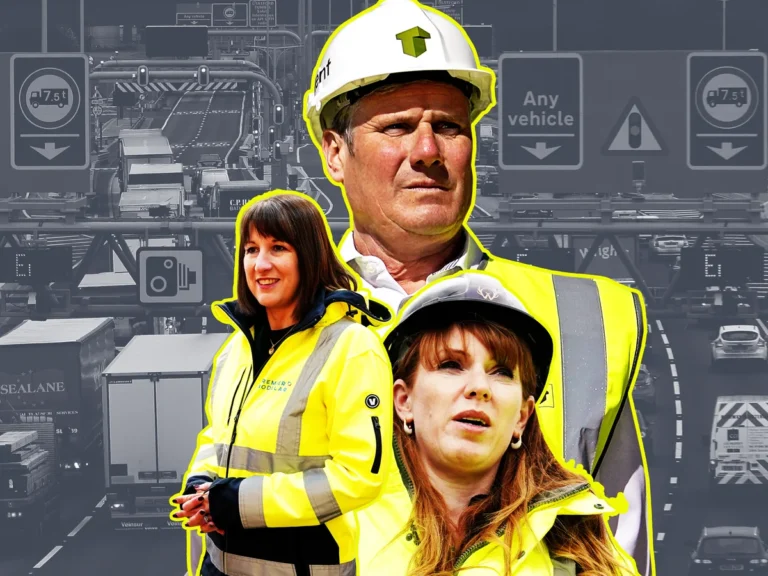George Monbiot, The Guardian.
The Lower Thames Crossing proves the point. It’s a white elephant plan, sucking money from local projects that could actually improve lives.
There appear to be two main determinants of what infrastructure gets built. The first is whether it provides large and lucrative contracts for powerful corporations. The second is whether ministers can pose beside it in hard hats and yellow jackets. Otherwise, it is hard to explain the decisions made.
Both determinants favour large and spectacular schemes. Big corporations don’t want to dabble in minor improvements: real money comes from prestige projects over which governments cannot afford to lose face, ensuring that they keep throwing cash, however high the budget spirals. And few ministers want to pose beside a new bus stop: a grand ego demands a grand setting.
Last week, the government quietly flicked another £590m at the planned Lower Thames Crossing, to the east of London. That’s the kind of money other public services must beg for. Compare it, for example, with the funding allocated in this month’s spending review for local amenities such as parks, libraries and swimming pools. Across the whole of England, they received £350m. But the extra money for the Lower Thames Crossing buys less than a mile of road. It means that the total costs of the scheme, according to the government, have risen to £9.2bn, for 14 miles of road.
Even this is a major underestimate. As the Transport Action Network (Tan) points out, several aspects of the project, such as necessary upgrades to junctions and connecting roads, to take the extra traffic, have been excluded from the total, disguising the full cost. TAN estimates it at £16bn. That’s more than all the new money (£15bn) trumpeted by Rachel Reeves this month for buses, trains and trams in England, outside London. It’s seven times as much as the Treasury allocated to fixing England’s school classrooms. Or the government could use it to double the amount invested in the National Housing Bank, to build social and affordable homes: which, by contrast, we need.
The benefit-cost ratio (BCR) is shocking, whichever way you slice it. Using the official figure for costs, the government body National Highways estimated the BCR at 0.48: in other words, a net loss of 52 pence for every pound spent. It then threw in some vaguely defined “wider economic benefits” to deliver an “adjusted BCR” of 1.22. That’s still low value for money. Compare it with fixing potholes and maintaining local roads, which has a BCR of 7, officially “very high” value for money. Oh, and guess what? The maintenance backlog for England’s local roads is just over £16bn.
I asked the Campaign for Better Transport to estimate what else might be done with the official figure of £9.2bn. It told me the money would enable every community in England to have what the government defines as a “reasonable level” of bus services for the next nine years. Or it could pay for 11,400 miles (18,400km) of cycle lanes, or 5,700 miles (9,200km) of bus lanes.
So why is this vastly expensive white elephant endlessly inflated while crucial services and benefits are cut? The clue is the “vastly expensive” bit: a single project on this scale can be extremely lucrative for large corporations, and they will lobby for it with commensurate vigour.
The government insists the new road will relieve congestion. But even 30 years ago, official assessments showed that new roads generate new traffic, a phenomenon called “induced demand”. They shift congestion to the next pinch point, which becomes another issue for the government to solve: jobs-for-life for the construction industry. Using modelling data from National Highways, Thurrock council estimates that traffic on the Dartford crossing, which the new road is supposed to relieve, will return to current levels in just five years. Given that the Lower Thames Crossing will take at least seven years to build, with massive disruption throughout, it’s hard to detect the public benefit. It will also funnel more traffic on to the M25, A13 and M2, greatly increasing congestion.
TAN has done what successive governments, astonishingly, have failed to do: commissioned a report on how demand for freight and passenger transport in the region and on the wider network might best be met. It found that new heavy freight and passenger rail connections would provide a far more effective solution, at roughly a quarter of the price. Even with added rail loading gauge upgrades and electrification, bus routes, ferries and trams, this approach would remain far cheaper, while meeting public need, reducing pollution and social exclusion and catalysing the long-overdue transition to rail freight in the UK.
But neither successive governments nor National Highways have seriously examined such alternatives to the crossing. For the past 60 years, the answer has been roads, regardless of the question. Not only has National Highways ignored other means of solving the problem, it has become promoter as well as planner of the scheme, engaging in a public relations offensive that looks to me like a crashing conflict of interest. If you want what transport planners call a “modal shift” from one kind of travel to another, first you need a conceptual shift. But we won’t get it from existing agencies. National Highways is a relic of another age, unfit for purpose, driving us towards disaster. It should be scrapped.
The greatest costs of schemes such as this are felt not in our tax bills, but in our bodies, minds and surroundings. The government estimates the new road will generate 6.6m tonnes of carbon dioxide. It would greatly increase both air pollution and traffic noise, and commit us to an even greater extent to car driving, with all its destructive implications for health, fitness and mental wellbeing, community cohesion and social attitudes.
As a rule, though there are exceptions, what improves our lives are multiple small interventions, tailored to local needs and responsive to local democracy. What damages our lives are prestige projects tailored to the demands of big finance and corporate shareholders. The capital behind them, that sometimes seems more powerful than governments, treats democracy and public need as traffic engineers treat pedestrians – obstacles to be designed out of the way.
Sometimes big infrastructure is necessary, but at all times it is a threat to democracy. This is why governments should approach it with caution and scepticism. Instead, they act as hucksters for corporate boondoggles. Such schemes allow politicians to stamp their mark on the nation, to don the hard hat and announce: “I did this.” Look on my works, ye mighty …
One measure of a nation’s success is the extent to which it can reduce its dependence on road transport, in favour of inclusive, low-impact travel. Our government seems committed to failure.


